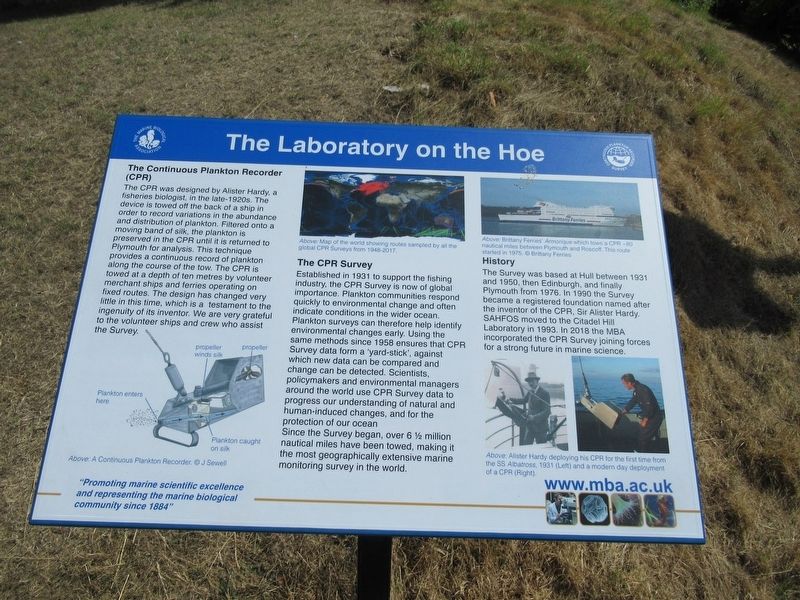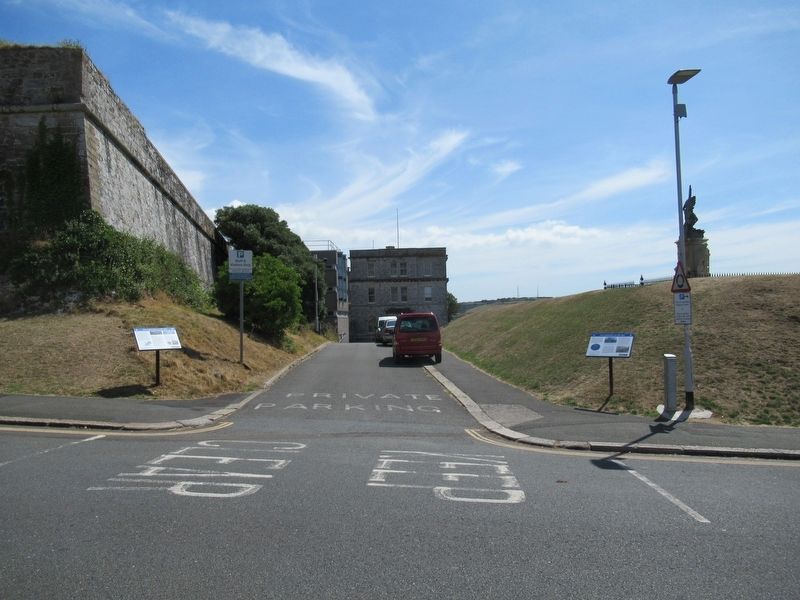Plymouth, England, United Kingdom — Northwestern Europe (the British Isles)
The Laboratory on the Hoe
The Continuous Plankton Recorder (CPR)
The CPR was designed by Alister Hardy, a fisheries biologist, in the late-1920s. The device is towed off the back of a ship in order to record variations in the abundance and distribution of plankton. Filtered onto a moving band of silk, the plankton is preserved in the CPR until it is returned to Plymouth for analysis. This technique provides a continuous record of plankton along the course of the tow. The CPR is towed at a depth of ten metres by volunteer merchant ships and ferries operating on fixed routes. The design has changed very little in this time, which is a testament to the ingenuity of its inventor. We are very grateful to the volunteer ships and crew who assist the Survey.
The CPR Survey
Established in 1931 to support the fishing industry, the CPR Survey is now of global importance. Plankton communities respond quickly to environmental change and often indicate conditions in the wider ocean. Plankton surveys can therefore help identify environmental changes early. Using the same methods since 1958 ensures that CPR Survey data form a 'yard-stick', against which new data can be compared and change can be detected. Scientists, policymakers and environmental managers around the world use CPR Survey data to progress our understanding of natural and human-induced changes, and for the protection of our ocean Since the Survey began, over 6 1/2 million nautical miles have been towed, making it the most geographically extensive marine monitoring survey in the world.
History
The Survey was based at Hull between 1931 and 1950, then Edinburgh, and finally Plymouth from 1976. In 1990 the Survey became a registered foundation named after the inventor of the CPR, Sir Alister Hardy. SAHFOS moved to the Citadel Hill Laboratory in 1993. In 2018 the MBA incorporated the CPR Survey joining forces for a strong future in marine science.
“Promoting marine scientific excellence and representing the marine biological community since 1884.” www.mba.ac.uk ( photo captions )
Above: Brittany Ferries' Armorique which tows a CPR -80 nautical miles between Plymouth and Roscoff. This route started in 1975.
Above: Alister Hardy deploying his CPR for the first time from the SS Albatross, 1931 (left) and a modern day deployment of a CPR (right).
“Promoting marine scientific excellence and representing the marine biological community since 1884.” www.mba.ac.uk
Topics. This historical marker is listed in these topic lists: Environment • Science & Medicine.
Location. 50° 21.88′ N, 4°
8.417′ W. Marker is in Plymouth, England. Marker is at the intersection of Madeira Road and Hoe Road, on the right when traveling west on Madeira Road. Touch for map. Marker is in this post office area: Plymouth, England PL1 2JU, United Kingdom. Touch for directions.
Other nearby markers. At least 8 other markers are within walking distance of this marker. A different marker also named The Laboratory on the Hoe (a few steps from this marker); Royal Marines Memorial (within shouting distance of this marker); a different marker also named The Laboratory on the Hoe (within shouting distance of this marker); Plymouth Royal Citadel (within shouting distance of this marker); Plymouth RAF Monument (about 90 meters away, measured in a direct line); Smeaton Lighthouse (about 120 meters away); National Armada Memorial (about 120 meters away); Plymouth Naval Memorial (about 180 meters away). Touch for a list and map of all markers in Plymouth.
Also see . . .
1. Marine Biological Association. Association website homepage (Submitted on September 26, 2018, by Michael Herrick of Southbury, Connecticut.)
2. Marine Biological Association of the United Kingdom. Wikipedia entry (Submitted on September 26, 2018, by Michael Herrick of Southbury, Connecticut.)
Credits. This page was last revised on January 27, 2022. It was originally submitted on September 26, 2018, by Michael Herrick of Southbury, Connecticut. This page has been viewed 101 times since then and 7 times this year. Photos: 1, 2. submitted on September 26, 2018, by Michael Herrick of Southbury, Connecticut.

